Protein is an essential part of a nutritious diet and a healthy body.
At each meal we have a choice of whether to eat protein from plant and/or animal sources.
As with all choices, there are advantages and disadvantages to each. I've written this article to help you make a simultaneously more informed and simple decision about whether it is healthier to eat meat or be some form of vegetarian (i.e. plant-based, lacto-ovo, or vegan).
This is not a discussion of the philosophical, ethical or environmental issues related to eating meat, though that time will eventually come. Rather, it is a discussion of how the consumption or exclusion of meat affects physical health.
There are several key subjects regarding health, nutrition and eating or not eating meat:
NUTRIENT CONTENT:
Protein is an essential macronutrient (the major source of food energy) and, therefore, an important factor in physical health. In addition to being a major source of energy (calories), protein is formed from amino acids, which are used for cellular construction.[1] There are some amino acids our bodies cannot produce. They are called "essential amino acids" and they must be eaten.
All animal meat is considered a complete protein, meaning that it contains all of the nine essential amino acids. In contrast, most plant protein sources are not complete by themselves. However, a combination of plant protein sources with complimentary amino acid profiles, such as rice and beans or any legume and grain for that matter, results in a complete protein structure. In this way, animal and plant proteins are identical.
And as long as complimentary plant proteins are consumed daily, not necessarily in every meal, they can supply adequate amounts of all the essential aminos your body needs.
There are other essential nutrients besides amino acids present in meat or other animal products that can be compromised by vegetarian diets types. In particular, plant food choices should include foods fortified with vitamin B12, vitamin D, and calcium. Other nutrients that could be of concern if few or no animal products are consumed include choline, EPA and DHA (omega 3s).[2]
In sum, science reveals that you can meet your caloric and nutrient requirements by not eating meat or consuming any animal products. But, it is important to note that vegetarian diets, particularly the vegan diet, which excludes all animal products, rely on eating fortified foods (vitamin and mineral enriched) to consume sufficient amounts of several important nutrients.
The USDA Food Pattern Modeling Analyses has produced food pattern charts providing detailed guidelines for composing nutritionally complete diets for four diet types: omnivores, plant-based, lacto-ovo vegetarians and vegans. Take a look starting at page 15.
Omnivore = a pattern in which all plant and animal products are included.
Plant-based diet = a pattern in which the majority of protein sources come from plant products, though some animal products can be included.
Lacto-ovo vegetarian = a pattern excluding all animal flesh, but including dairy products and eggs.
Vegan = a pattern excluding all animal products.
HEALTH RISK BY TYPE OF MEAT / PROTEIN:
Science has identified a hierarchy of health risks associated with different forms of protein. They're identified below in order of highest risk to lowest.[3]
Processed meat = smoked, cured, salted or chemically preserved
Red meat = beef, lamb, pork and goat
Science links health risks associated with these foods to the presence of greater quantities of saturated fat, cholesterol, sodium, iron, nitrates and other carcinogens.[4]
GREATEST HEALTH RISKS ASSOCIATED WITH (PROCESSED) RED MEAT:
Four serious health conditions are most strongly associated with eating high amounts of processed red meat. They include our first and second leading causes of death, cardiovascular disease ("CVD") and cancer, as well as type 2 diabetes and obesity.[5]
Harvard School of Public Health ("HSPH") researchers published findings from the largest, longest study to date on the connection between eating red meat and survival.[6] They found a higher intake of unprocessed red meat was associated with a significantly elevated risk of death, CVD, and cancer mortality, and these risks increased even more with processed red meat.
Similarly, the Continuing Update Project of the World Cancer Research Fund and the American Institute for Cancer Research found "convincing evidence", their highest standard, that consuming red meat and processed meats increases the risk of colorectal cancer, the 3rd most prevalent form of cancer. [7][8]
While eating red meat on a regular basis may shorten your lifespan, and eating processed red meat increases that risk,[9] vegetarian-style eating patterns have been associated with improved health conditions, including lower total mortality, reduced risk of CVD, lower blood pressure and less obesity, according to the USDA/USHHS's 2010 Dietary Guidelines for Americans (p. 45).
The consensus among nutrition authorities is that replacing red meat with fish, poultry, nuts and beans can lower the risk of early death and help prevent heart disease and diabetes.[10][11]
HOW MUCH MEAT IS UNHEALTHY?
Despite the warnings to avoid processed red meat, no one has ever developed a chronic illness, much less died from having a fastfood hamburger for lunch.
This begs the question: How meat must one eat to increase their risk of serious illness or early death?
First, it's clear that the greatest factors contributing to adverse health effects are whether the meat is processed and/or red. So poultry, fish and wild game pose little to no health risk, regardless of the quantity eaten.
The science surrounding the health risks associated with eating processed red meat is ominous. It's apparently so grave that the American Institute of Cancer Research ("AICR") cannot find a level at which consumption of processed meat could be reliably considered completely safe. Their research has found that every 1.7 ounces of processed meat (approximately 2 slices of deli meat) consumed per day increases risk of colorectal cancer by 21 percent.
Eating as little as one hot dog or two slices of processed deli meat per day (or an equal amount of any other processed meat like bacon or sausage) is associated with a 40% increased risk of heart attacks and a 20% higher risk of diabetes, according to the HSPH after performing a worldwide analysis of evidence of how eating unprocessed red meat and processed meat relates to risk of cardiovascular diseases and diabetes.
HSPH advises limiting your weekly consumption of processed meat to no more than 3 ounces, or a hot dog and a half or three slices of deli meat.[12]
Unprocessed red meat carries less risk, but apparently still enough worth warning about.
Eating one serving of unprocessed red meat per week is associated with relatively small risk.[13][14] AICR’s expert panel recommends limiting consumption of unprocessed red meat to 18 ounces (cooked), just over one pound per week. Beyond this amount, evidence indicates that every 1.7 ounces of red meat consumed per day increases cancer risk by 15 percent.[15]
Again, there are no such dietary limitations or guidelines concerning poultry, fish or game, implying that the risks, if any, are negligible.
For persons with advanced health problems, perhaps eating any amount of processed or unprocessed red meat is dangerous. However, for the rest of us, it appears that the rule of moderation will keep us safe from such perils. Unfortunately, we have two things working against us: we're creatures of habit and, culturally, American's don't to moderation very well (cue the Old 96 ouncer. Sadly, John Candy actually died from heart disease).
* * * *
When deciding what to put in your body It's important to sort fact from fiction, strong evidence from weak connections, practical matters from theory, and critically important issues from interesting questions.
By examining the work of several of the world's preeminent sources for health and nutrition information, several points are clear about eating meat:
Eating a more plant-based diet is one of four major recommendations in the 2010 report of the US Dietary Guidelines Advisory Committee on the Dietary Guidelines for Americans.
This is a committee tasked to "provide science-based advice for Americans, in order to promote health and to reduce the risk for major chronic diseases through diet and physical activity." And they have found the "totality of evidence documenting a beneficial impact of plant-based dietary patterns on CVD [ the #1 cause of death of Americans ] risk is remarkable and worthy of recommendation."
That said, you should decide for yourself how much, if any meat should be a part of your diet based on all factors, including nutrition. Hopefully, you now feel better able to make an educated decision.
If you enjoyed this post consider tweeting or sharing it so others might, too.
BODY – MIND – SPIRIT
At each meal we have a choice of whether to eat protein from plant and/or animal sources.
As with all choices, there are advantages and disadvantages to each. I've written this article to help you make a simultaneously more informed and simple decision about whether it is healthier to eat meat or be some form of vegetarian (i.e. plant-based, lacto-ovo, or vegan).
This is not a discussion of the philosophical, ethical or environmental issues related to eating meat, though that time will eventually come. Rather, it is a discussion of how the consumption or exclusion of meat affects physical health.
There are several key subjects regarding health, nutrition and eating or not eating meat:
- Nutrient content
- Health risk by type of meat / protein
- Greatest health risks associated with (processed) red meat
- How much meat is unhealthy?
NUTRIENT CONTENT:
Protein is an essential macronutrient (the major source of food energy) and, therefore, an important factor in physical health. In addition to being a major source of energy (calories), protein is formed from amino acids, which are used for cellular construction.[1] There are some amino acids our bodies cannot produce. They are called "essential amino acids" and they must be eaten.
All animal meat is considered a complete protein, meaning that it contains all of the nine essential amino acids. In contrast, most plant protein sources are not complete by themselves. However, a combination of plant protein sources with complimentary amino acid profiles, such as rice and beans or any legume and grain for that matter, results in a complete protein structure. In this way, animal and plant proteins are identical.
And as long as complimentary plant proteins are consumed daily, not necessarily in every meal, they can supply adequate amounts of all the essential aminos your body needs.
There are other essential nutrients besides amino acids present in meat or other animal products that can be compromised by vegetarian diets types. In particular, plant food choices should include foods fortified with vitamin B12, vitamin D, and calcium. Other nutrients that could be of concern if few or no animal products are consumed include choline, EPA and DHA (omega 3s).[2]
In sum, science reveals that you can meet your caloric and nutrient requirements by not eating meat or consuming any animal products. But, it is important to note that vegetarian diets, particularly the vegan diet, which excludes all animal products, rely on eating fortified foods (vitamin and mineral enriched) to consume sufficient amounts of several important nutrients.
The USDA Food Pattern Modeling Analyses has produced food pattern charts providing detailed guidelines for composing nutritionally complete diets for four diet types: omnivores, plant-based, lacto-ovo vegetarians and vegans. Take a look starting at page 15.
Omnivore = a pattern in which all plant and animal products are included.
Plant-based diet = a pattern in which the majority of protein sources come from plant products, though some animal products can be included.
Lacto-ovo vegetarian = a pattern excluding all animal flesh, but including dairy products and eggs.
Vegan = a pattern excluding all animal products.
HEALTH RISK BY TYPE OF MEAT / PROTEIN:
Science has identified a hierarchy of health risks associated with different forms of protein. They're identified below in order of highest risk to lowest.[3]
- Processed red meat
- Unprocessed red meat
- Poultry with skin
- Skinless poultry
- Fish
- Nuts, seeds, beans
Processed meat = smoked, cured, salted or chemically preserved
Red meat = beef, lamb, pork and goat
Science links health risks associated with these foods to the presence of greater quantities of saturated fat, cholesterol, sodium, iron, nitrates and other carcinogens.[4]
GREATEST HEALTH RISKS ASSOCIATED WITH (PROCESSED) RED MEAT:
Four serious health conditions are most strongly associated with eating high amounts of processed red meat. They include our first and second leading causes of death, cardiovascular disease ("CVD") and cancer, as well as type 2 diabetes and obesity.[5]
Harvard School of Public Health ("HSPH") researchers published findings from the largest, longest study to date on the connection between eating red meat and survival.[6] They found a higher intake of unprocessed red meat was associated with a significantly elevated risk of death, CVD, and cancer mortality, and these risks increased even more with processed red meat.
Similarly, the Continuing Update Project of the World Cancer Research Fund and the American Institute for Cancer Research found "convincing evidence", their highest standard, that consuming red meat and processed meats increases the risk of colorectal cancer, the 3rd most prevalent form of cancer. [7][8]
While eating red meat on a regular basis may shorten your lifespan, and eating processed red meat increases that risk,[9] vegetarian-style eating patterns have been associated with improved health conditions, including lower total mortality, reduced risk of CVD, lower blood pressure and less obesity, according to the USDA/USHHS's 2010 Dietary Guidelines for Americans (p. 45).
The consensus among nutrition authorities is that replacing red meat with fish, poultry, nuts and beans can lower the risk of early death and help prevent heart disease and diabetes.[10][11]
HOW MUCH MEAT IS UNHEALTHY?
Despite the warnings to avoid processed red meat, no one has ever developed a chronic illness, much less died from having a fastfood hamburger for lunch.
This begs the question: How meat must one eat to increase their risk of serious illness or early death?
First, it's clear that the greatest factors contributing to adverse health effects are whether the meat is processed and/or red. So poultry, fish and wild game pose little to no health risk, regardless of the quantity eaten.
The science surrounding the health risks associated with eating processed red meat is ominous. It's apparently so grave that the American Institute of Cancer Research ("AICR") cannot find a level at which consumption of processed meat could be reliably considered completely safe. Their research has found that every 1.7 ounces of processed meat (approximately 2 slices of deli meat) consumed per day increases risk of colorectal cancer by 21 percent.
Eating as little as one hot dog or two slices of processed deli meat per day (or an equal amount of any other processed meat like bacon or sausage) is associated with a 40% increased risk of heart attacks and a 20% higher risk of diabetes, according to the HSPH after performing a worldwide analysis of evidence of how eating unprocessed red meat and processed meat relates to risk of cardiovascular diseases and diabetes.
HSPH advises limiting your weekly consumption of processed meat to no more than 3 ounces, or a hot dog and a half or three slices of deli meat.[12]
Unprocessed red meat carries less risk, but apparently still enough worth warning about.
Eating one serving of unprocessed red meat per week is associated with relatively small risk.[13][14] AICR’s expert panel recommends limiting consumption of unprocessed red meat to 18 ounces (cooked), just over one pound per week. Beyond this amount, evidence indicates that every 1.7 ounces of red meat consumed per day increases cancer risk by 15 percent.[15]
Again, there are no such dietary limitations or guidelines concerning poultry, fish or game, implying that the risks, if any, are negligible.
For persons with advanced health problems, perhaps eating any amount of processed or unprocessed red meat is dangerous. However, for the rest of us, it appears that the rule of moderation will keep us safe from such perils. Unfortunately, we have two things working against us: we're creatures of habit and, culturally, American's don't to moderation very well (cue the Old 96 ouncer. Sadly, John Candy actually died from heart disease).
* * * *
When deciding what to put in your body It's important to sort fact from fiction, strong evidence from weak connections, practical matters from theory, and critically important issues from interesting questions.
By examining the work of several of the world's preeminent sources for health and nutrition information, several points are clear about eating meat:
- Eating meat is optional; a properly constructed vegetarian diet (in all forms) can fulfill all essential dietary requirements.
- Vegetarian diets may require supplementation of several nutrients mainly found in meat and/or animal products.
- There is strong evidence connecting red meat consumption with increased risk of chronic illness and early death.
- There is very strong evidence connecting eating processed meat with increased risk of chronic illness and early death.
- Eating at little as one sandwich made with processed meat or red meat increases health risks significantly.
- Eating poultry, fish and wild game poses little health risks for already healthy people.
- It's very hard to reach firm conclusions about the long-term relationship between food and health.
Eating a more plant-based diet is one of four major recommendations in the 2010 report of the US Dietary Guidelines Advisory Committee on the Dietary Guidelines for Americans.
This is a committee tasked to "provide science-based advice for Americans, in order to promote health and to reduce the risk for major chronic diseases through diet and physical activity." And they have found the "totality of evidence documenting a beneficial impact of plant-based dietary patterns on CVD [ the #1 cause of death of Americans ] risk is remarkable and worthy of recommendation."
That said, you should decide for yourself how much, if any meat should be a part of your diet based on all factors, including nutrition. Hopefully, you now feel better able to make an educated decision.
If you enjoyed this post consider tweeting or sharing it so others might, too.
BODY – MIND – SPIRIT
| |

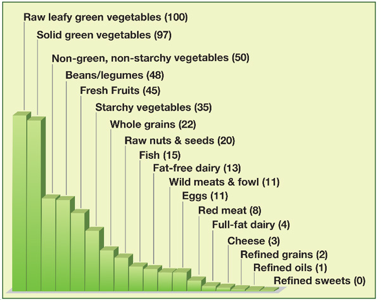
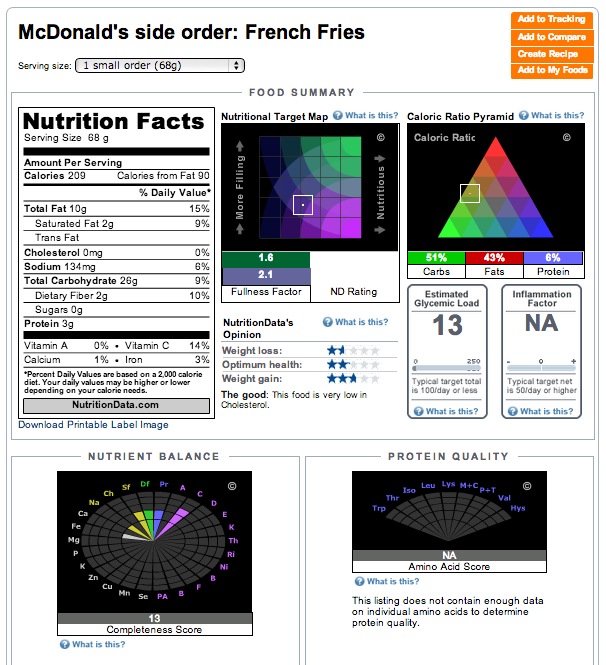
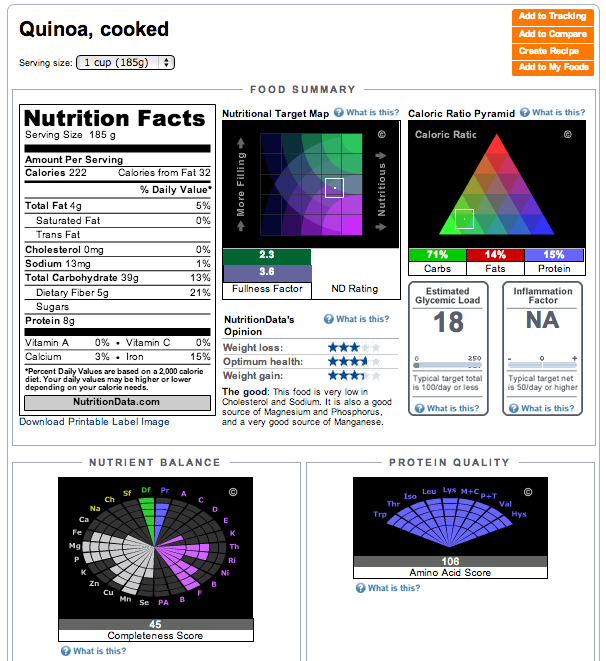
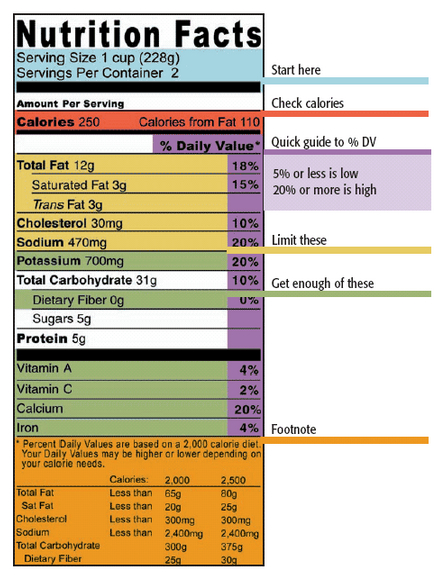
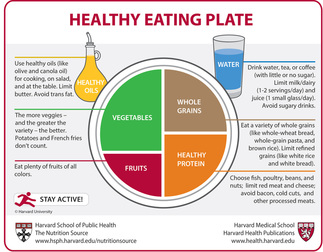
 RSS Feed
RSS Feed